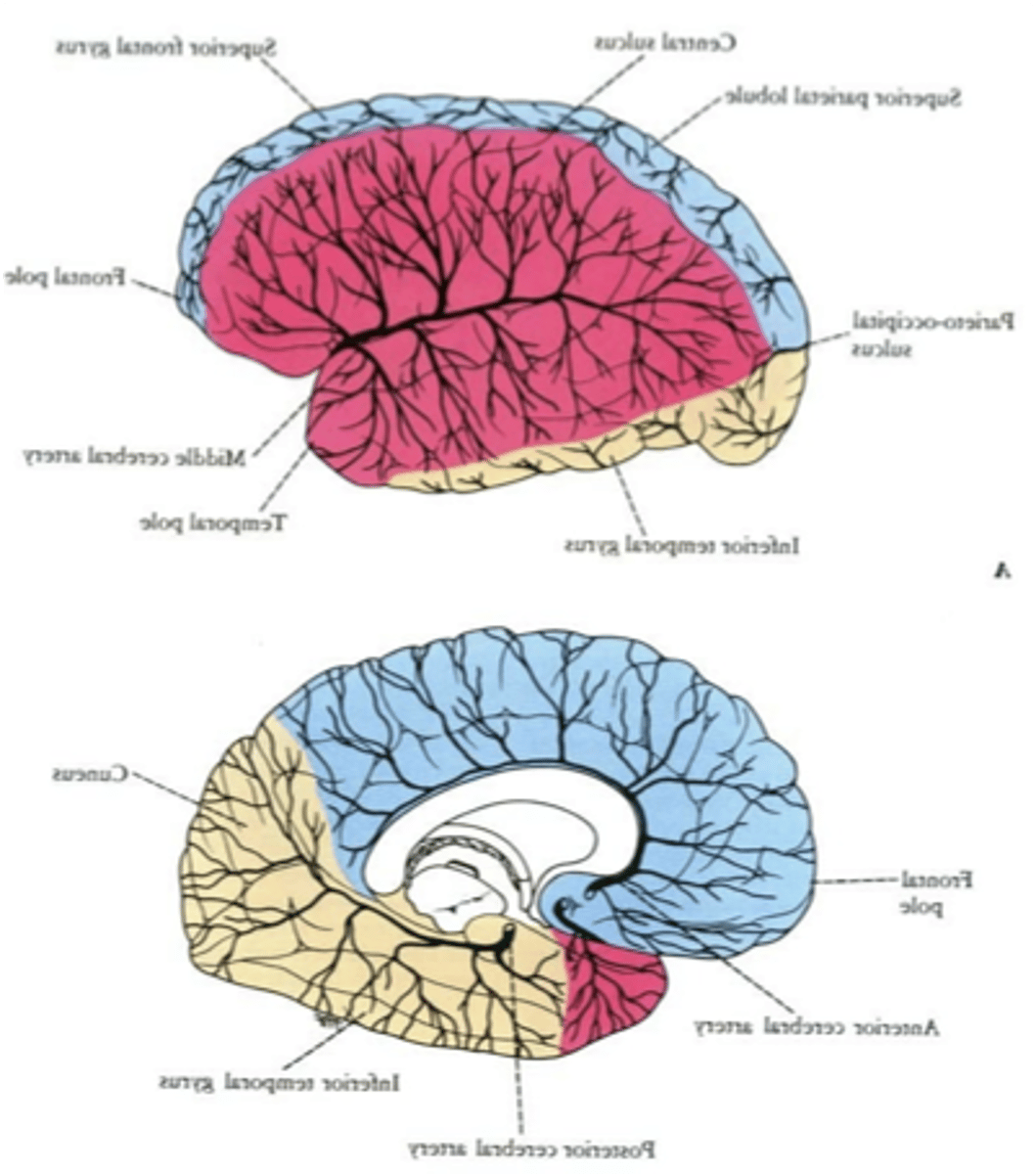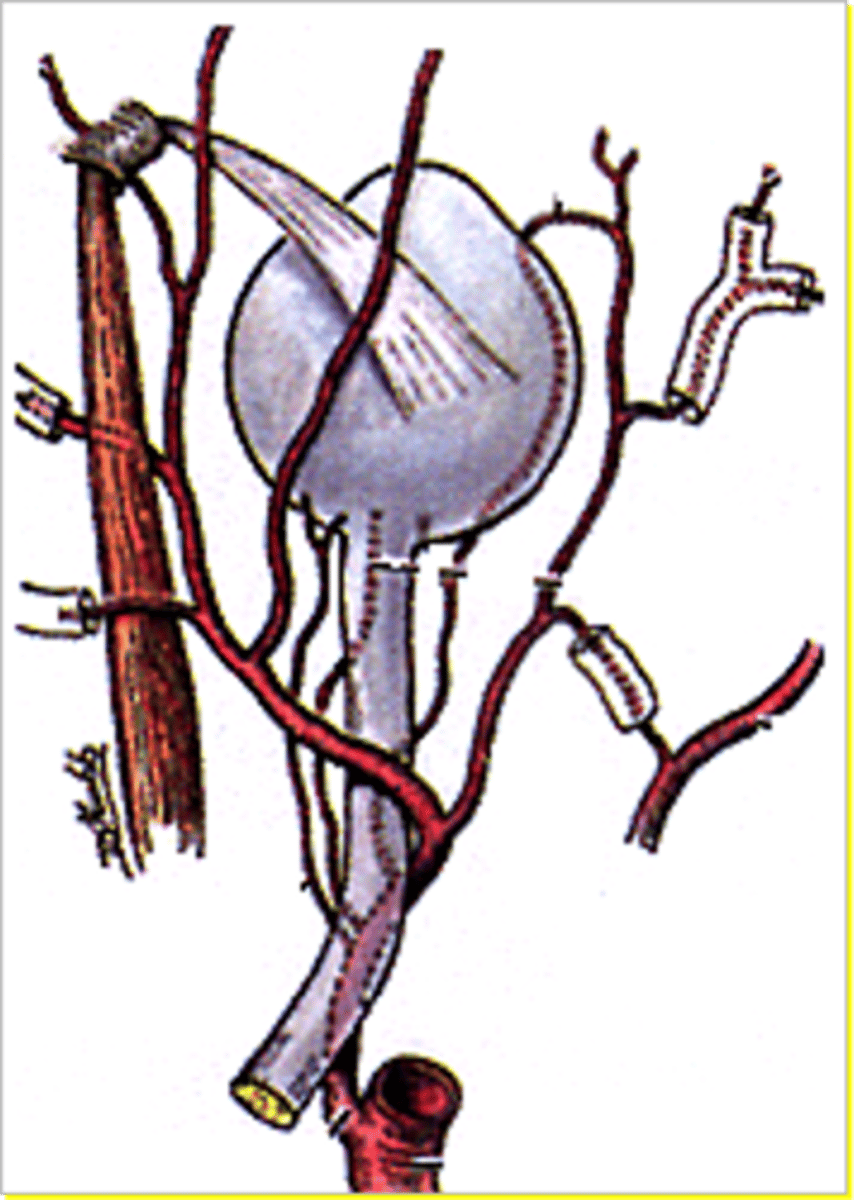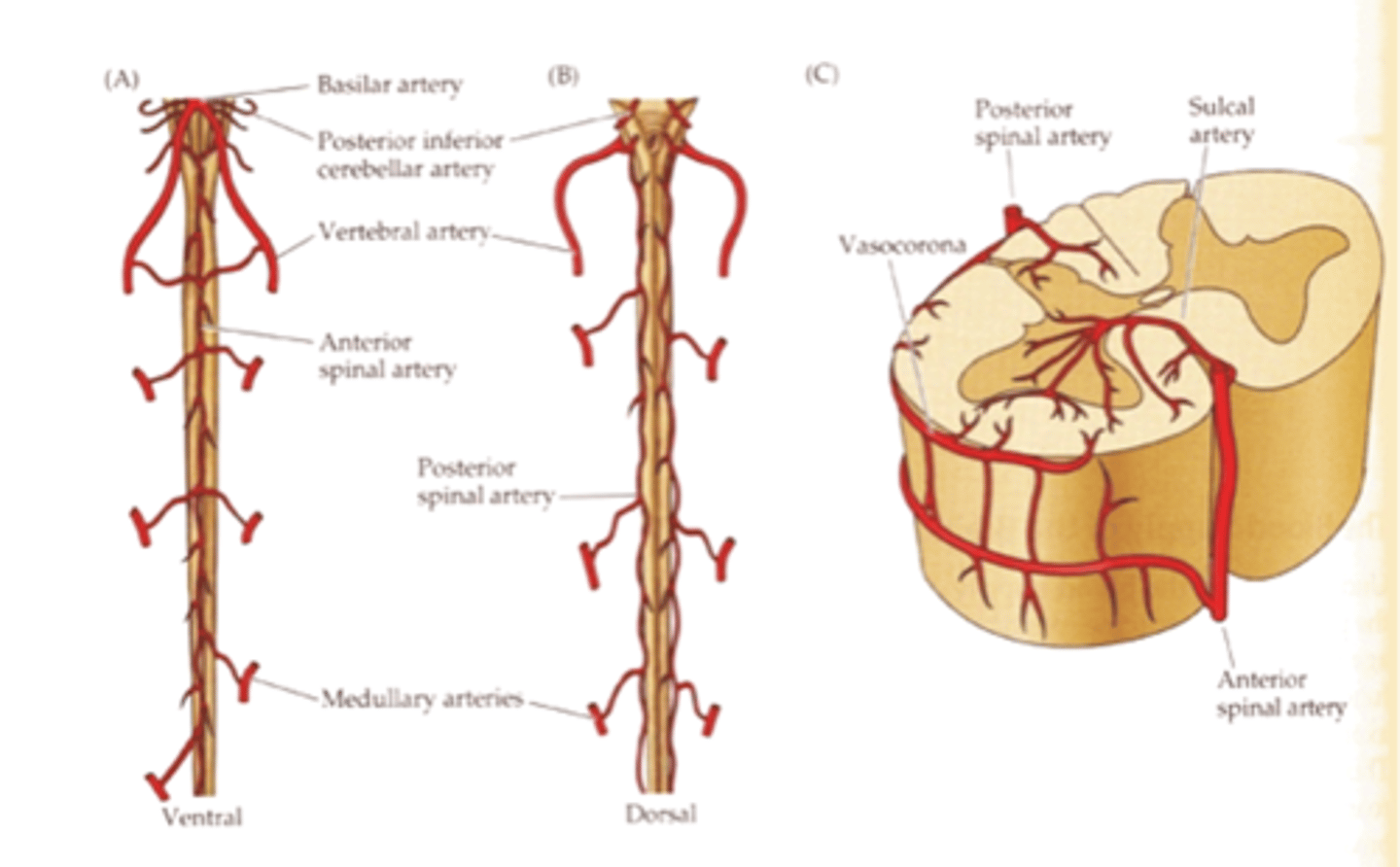Lecture 5b: Lesion Basis of Descending Motor Pathways - UMN vs LMN Lesions
1/19
There's no tags or description
Looks like no tags are added yet.
Name | Mastery | Learn | Test | Matching | Spaced |
|---|
No study sessions yet.
20 Terms
Characteristics of UMN Lesion
-1. Spastic paralysis: still getting nerve input
-2. Hypertonus: muscles that are influence to be too stiff or are excessively biased toward supporting antigravity function
-3. Hyperreflexia: happens when your muscles have an increased or overactive reflex response
-4. Atrophy of Disuse: caused by not using your muscles enough
Characteristics of LMN Lesion
-Flaccid paralysis: getting no nerve input
-Hypotonus: muscles that are influenced to be too stiff or are excessively biased toward supporting antigravity function
-Areflexia: absence of neurologic reflexes such as the knee-jerk reaction
-Wasting Atrophy: wasting (thinning) or loss of muscle tissue
Babinski Sign
-seen in UMN lesions of corticospinal tract
-drag an object along the lateral portion of the foot from the heel to the pinky toe
→ normal: toes will go down
→ abnormal: big toe goes up, and other toes fan out
-not valid for children under 12-18 months
Components of the General Neurological Exam
-Mental status evaluation
-Evaluation of CNs
-Sensory evaluation
-Motor evaluation
-Reflexes
-Gait and Coordination
Components of the Motor Neurological Exam
-Strength: upper and lower extremity → look for weakness
-Reflexes: look for hyperreflexia (UMN) or areflexia (LMN)
-Babinski sign: UMN problem of corticospinal tract
-Muscle bulk: look for atrophy of disuse or wasting
-Abnormal movements
Miller-Fisher Variant of Guillain-Barre Syndrome
-Triad: areflexia, ataxia, ophthalmoplegia
-Often preceded by a viral illness
-Onset is typically acute and symptoms are the worst 2 weeks after initial onset
-Variant of Guillain-Barre Syndrome: acute immune-mediated polyneuropathy → attack on peripheral nervous system myelin
Localizing Lesions via Blood Supply
-Anterior System (ICA): Anterior & Middle Cerebral Artery → effects only on UMN
-Posterior System (Vertebrobasilar): Posterior Cerebral Artery

Result of CRA occlusion
-blood loss to inner retina → ipsilateral vision loss
-blood loss to Areas 4, 5, 6, 7 → contralateral (damage above the motor decussation) motor loss/muscle weakness (UMN)
-blood loss to Area 3, 1, 2 → sensory loss

Systems of Blood Supply to Spinal Cord
-Dorsal Column System: Posterior Spinal Artery
-Anterolateral System: Anterior Spinal Artery

Infarction of Anterior Spinal Artery
-Anterior Cord Syndrome
-supplies anterior 2/3 of spinal cord
-spares dorsal column → sensory and motor loss, but not all of sensory
Effect of Anterior Spinal Artery Occlusion on Both UMN & LMN
-UMN: damage to corticospinal tract (white matter)
-LMN: damage to ventral horn (gray matter)
Laterality of Spinal Artery Occlusion
-lesions can be bilateral is the vessel is completely occluded
-artery travels at midline
Occlusion of Right ICA
-left upper & lower extremity weakness
-UMN deficits: hyperreflexia, hypertonia, spastic paralysis, atrophy of disuse
Occlusion of Left ICA
-right upper & lower extremity weakness
-UMN deficits: hyperreflexia, hypertonia, spastic paralysis, atrophy of disuse
Occlusion of Right ACA
-left lower extremity weakness
-UMN deficits: hyperreflexia, hypertonia, spastic paralysis, atrophy of disuse
Occlusion of Left ACA
-right lower extremity weakness
-UMN deficits: hyperreflexia, hypertonia, spastic paralysis, atrophy of disuse
Occlusion of Right MCA
-left upper extremity weakness
-UMN deficits: hyperreflexia, hypertonia, spastic paralysis, atrophy of disuse
Occlusion of Left MCA
-right upper extremity weakness
-UMN deficits: hyperreflexia, hypertonia, spastic paralysis, atrophy of disuse
Occlusion of Anterior Spinal Artery at Level C1
weakness of both upper and lower extremities
Occlusion of Anterior Spinal Artery at Level T6
weakness of lower extremity only